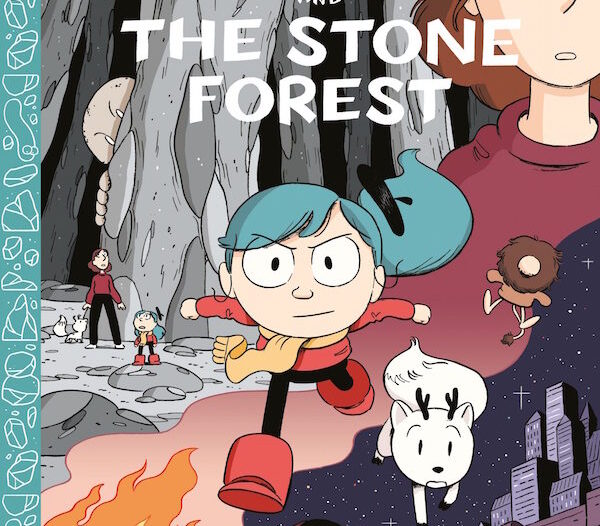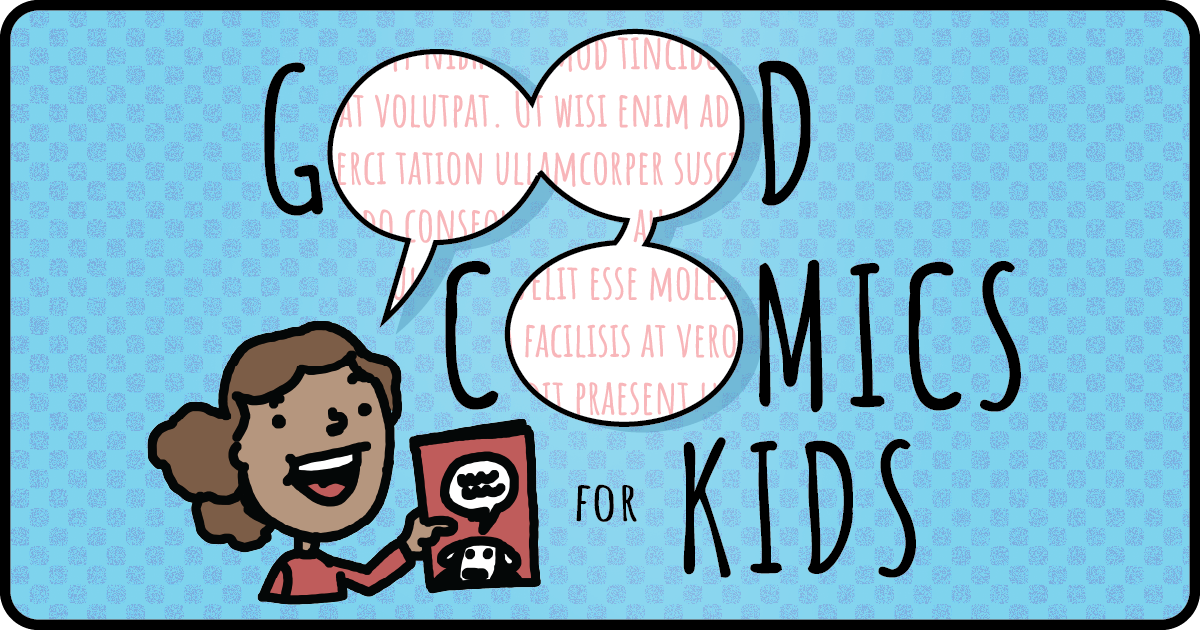
Review: ‘Hilda and The Stone Forest’
 Hilda and The Stone Forest
Hilda and The Stone Forest
By Luke Pearson
Flying Eye Books; $19.95
If you have any interest at all in comics, especially those well suited for kids, then chances are you are already quite familiar with cartoonist Luke Pearson’s Hilda character, star of a series of graphic novels. And even if you haven’t read them all—the fifth one of which was just released this fall—you probably have heard of Pearson’s Hilda.
Chances are you’re going to hear a lot more about her in the months and years to come, too, as Netflix is currently developing an animated series based on the first four books for 2018. Hilda is about to hit the multi-media big time, and it couldn’t have happened to a more deserving heroine.
ADVERTISEMENT
ADVERTISEMENT
If you’re not yet familiar with Hilda, let’s rectify that immediately. Hilda is a little blue-haired girl who lives with her mom and her fox-with-antlers pet Twig, first in a remote mountain cottage and then, later, in the city of Trolberg.
Insatiably curious and excitable, Hilda regularly finds herself in fairly fantastic adventures, which, in the Scandinavian-inspired half-fantasy world Pearson has built for her, isn’t too terribly hard to do. He actualizes and modernizes the traditional, superstitious, folk tale version of the Old World, where sprites, spirits, and supernatural creatures regularly rub elbows with regular, everyday people.
The world of the Hilda books is like the one in fairy tales, like the one people generations ago sincerely believed they lived in, and, perhaps most relevantly, like the one that children feel they live in, particularly when they are at play.
While Pearson’s books lead one into the next in an ongoing narrative, each is also fairly complete on its own. Hilda, her mom, and even Twig are such strong and universally recognizable characters that one need not know exactly who they are and how they came to be; they reveal themselves almost instantaneously. There are certain threads that run through the books, but each has its own conflict and drama that is introduced, escalated, and resolved…for the most part.
Hilda and The Stone Forest, being the fifth book, probably isn’t the best place to start, but it’s not at all a bad place to start, either. When we first encounter Hilda, she is involved in a particularly Hilda-like adventure: She and Twig are giving chase to a small, endtable-sized patch of ground that has sprouted legs and run off, with a tiny little house full of tiny little people atop it that our heroine is trying to save.
She rushes home to a very awkward Sunday dinner with her mother, whom she keeps the truth of what she was up to away from in a humorously desperate way, as the little elves from the little house she just saved wander about the kitchen counter and acclimate themselves to giant people foodstuffs.
And so begins a pattern that Pearson repeats in montage fashion. Hilda tells her mom she’s going off to do something innocuous, gets into a crazy adventure that Pearson details in a single drawing (although in truth it seems like it would be enough to power an entire graphic novel), and then she makes up some excuse about why she is late or wet to her increasingly suspicious mother.
Hilda’s dishonesty seems to come from a decent enough place. Much of it is, of course, selfish, in that she doesn’t want her mother to forbid her from going out and having such adventures. But some of it seems to be that she doesn’t necessarily want her mother to worry about her, or, as we’ll eventually learn, to get in to any kind of danger. Hilda’s mom is no dummy. Trolls are a fact of life in their world, she’s encountered many strange creatures herself over the years, and they currently share their home with a sort of house spirit who can teleport himself…and them.
ADVERTISEMENT
ADVERTISEMENT
When a grounded Hilda tries to use those powers to escape her room and her mom grabs hold of her, the teleportation magic goes screwy, and mother and daughter find themselves lost in a stone forest in the bowels of the mountain that Trollberg is built at the foot of.
That is where all the trolls live, and it is where they are unrestricted in their movements by the sun (which, as you likely know, turns trolls into stone). And that is where Hilda and her mother have it out, and Hilda confesses this sort of thing is only ever really any fun when she knows that her mom is safe at home waiting for her, and waiting to take care of her. Play, no matter how dangerous, is fun, but only when it’s a sort of option, a temporary state that one can choose to stop engaging in and return to safe normalcy at any time.
It will come as no surprise that Hilda and her mom survive their extensive shared adventure, and, if you’ve read any of the previous books, it will come as no surprise that the adventure is a particularly thrilling and imaginative one. The pair must navigate the maze of caves and elude the trolls, while learning a bit about troll culture and their ecosystem in the process. (They meet, for example, a nice troll with a nice troll child, and they help them from the bigger, meaner, two-headed troll that bullies his smaller fellow trolls.)
What is surprising about this particular book is that it ends with a bit of a cliffhanger, the last two pages depicting a dramatic turn of events that will be continued in the next book. That’s somewhat different, but not at all a bad thing. After all, once you’ve read one Hilda book, you’ll want to read another.
Filed under: All Ages, Graphic Novels, Reviews
About J. Caleb Mozzocco
J. Caleb Mozzocco is a way-too-busy freelance writer who has written about comics for online and print venues for a rather long time now. He currently contributes to Comic Book Resources' Robot 6 blog and ComicsAlliance, and maintains his own daily-ish blog at EveryDayIsLikeWednesday.blogspot.com. He lives in northeast Ohio, where he works as a circulation clerk at a public library by day.
ADVERTISEMENT
ADVERTISEMENT
SLJ Blog Network
The 2024 Ninja Report: Bleak
A Sequel Coming This Summer That You Won’t Want to Miss: Bob Shea Discusses His Latest
Navigating the High School and Academic Library Policy Landscape Around Dual Enrollment Students
Happy AANHPI Month! A guest post by Malia Maunakea
ADVERTISEMENT







